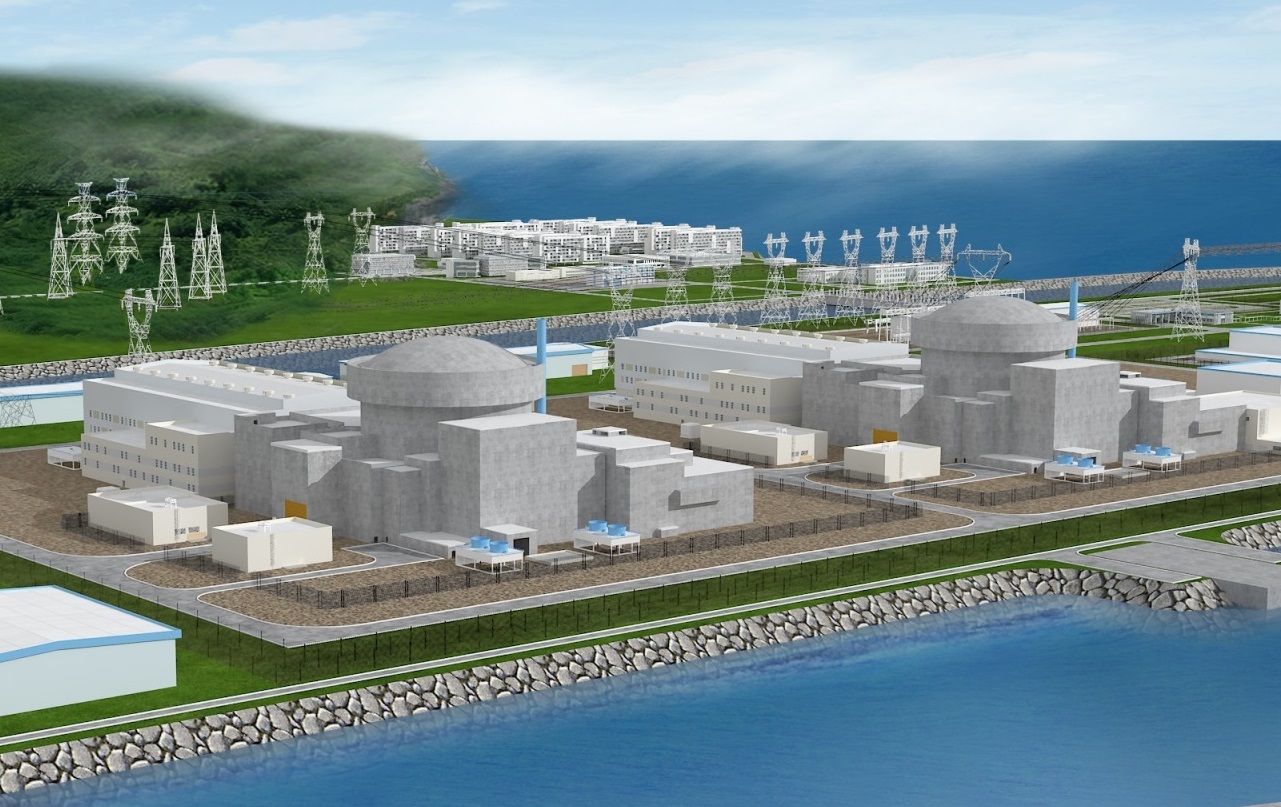Interchangeable But Not Identical - For Now
Imagine you've walked into a restaurant and are at the counter to order. You notice, but think nothing of the fact, that there appears to be two order windows and possibly two separate kitchens. You order a cheeseburger, expecting American cheese and ketchup (among other things), but what you get has mustard and Swiss. When you make a comment about it, you're told that "cheese is cheese" and nothing more is said. Two items-mustard and Swiss-weren't ordered, but one was-a cheeseburger-and so you eat it.
Wanting a product with a set of very broad specifications without being able to discern, necessarily, how those specifications will be arrived at is more or less the present situation with China's much-touted Hualong One nuclear plant-purported to be the shining star of China's new nuclear export. What confuses the situation greatly is the fact that while in some ways a singular product is being offered for sale by a single front (a single unit, 1150-1170 MWe+ pressurized water reactor nuclear plant), there are in fact two separate and different overall power plant designs. Recent developments, however, point out that the powers-that-be in China (in a type of regime that typically abhors wasteful duplication) have begun a move to combine the designs of the two more-or-less rival firms that are each making its own version-whether the firms like it or not.

Hualong One concept art; photo courtesy China General Nuclear (CGN).
In March 2016, Hualong International Nuclear Power Technology Co., Ltd. was formed as a joint venture between two separate reactor designer/vendors, namely CGN (China General Nuclear Power) and CNNC (China National Nuclear Corporation). The intent was to offer a single marketing front for the two companies' different interpretations of a three-loop PWR nuclear plant, which in either form was to be heavily marketed for export under the title HPR1000. The two designs differed considerably at the start, including having very different cores and safety systems. Some sensible rationalization did occur early, according to World Nuclear Association, as the new 177 element core developed for the CNNC ACP1000 plant (one of the two Hualong One predecessors) was selected over the core developed for the other predecessor, the CGN ACPR1000.
However, even though the core was made identical between the two offerings and the basic specifications of the plants are identical (such as power output, core damage frequency, and others), the rest of the plant has not been rationalized. The plants differ in a number of ways, not the least of which is the design and application of safety systems-the CNNC version having a larger containment and more application of the concept of passive safety, while the CGN version relies on multiple redundant safety injection trains (not unlike the path chosen by AREVA, from whose Framatome beginnings these three loop plants originally derive, although today the Chinese have complete intellectual rights to these newest designs).
Just this week (on August 14) it was reported that further moves are being made at high levels to push the two firms to some closer unity of design. Reporting in The Star shows that the two firms have agreed to place intellectual property rights for their designs in the holding of Hualong International, and that they've made an agreement to use "integrated technical standards" in constructing Hualong One plants-a move signed off on by the regulator. That said, an unnamed consultant quoted by The Star observed that the two companies might be pushed somewhat further to work together but noted that without any forceful moves by the powers-that-be "the merger will remain window dressing and there are still in fact two Hualongs."
It's unlike Communist governments (and for all its improvements, China still surely is that) to tolerate what communists would normally see as wasteful duplication-failing to see the flip side of the benefit of two competitive designs in the event something very wrong should develop with one. One cannot imagine that the present situation of having two different power plants marketed to fill the same niche, whether for export or domestic use, would continue forever. Unfortunately, the split trend has been established in material as well as concept, as both designs are well along in actual builds with the the CGN design being constructed at Fangchenggang, and planned to be built at Bradwell in the United Kingdom and the CNNC design being built as Fuqing Units 5 and 6 in China and at Karachi in Pakistan. An agreement has also been signed with Argentina to provide Hualong technology, with Argentina's national nuclear operator, Nucleoelectrica Argentina, acting as architect-engineer and with heavy localization. In addition to these projects, the Hualong One of both variants has been proposed for dozens of further units' worth of construction in China, depending upon how far the nuclear buildout really occurs.
For the time being, the Hualong One continues as twins with the same name. They're fraternal not identical twins. However, unlike with children, these nuclear twins are likely to be made identical simply for the sake of standardization and economy at some point in the future.

